Redemption and racing around Rwanda
By Craig Schommer
It’s 4:45am in Kigali. Skyler and I roll up to the start line of the Race Around Rwanda, an ultra-endurance cycling event. There are individual and two rider team categories. We are signed up as the latter. Ahead of us lay 1,000km (45% dirt) and 55k feet of climbing along beautiful dirt roads, through hilltop villages, past cheering children and curious villagers. And unexpectedly for me, sections of the most sublime pavement I’ve ever experienced. Mixed in with that are wooden plank bridges with gaps wide enough to eat your front wheel; like riding in a real life Zwift world.
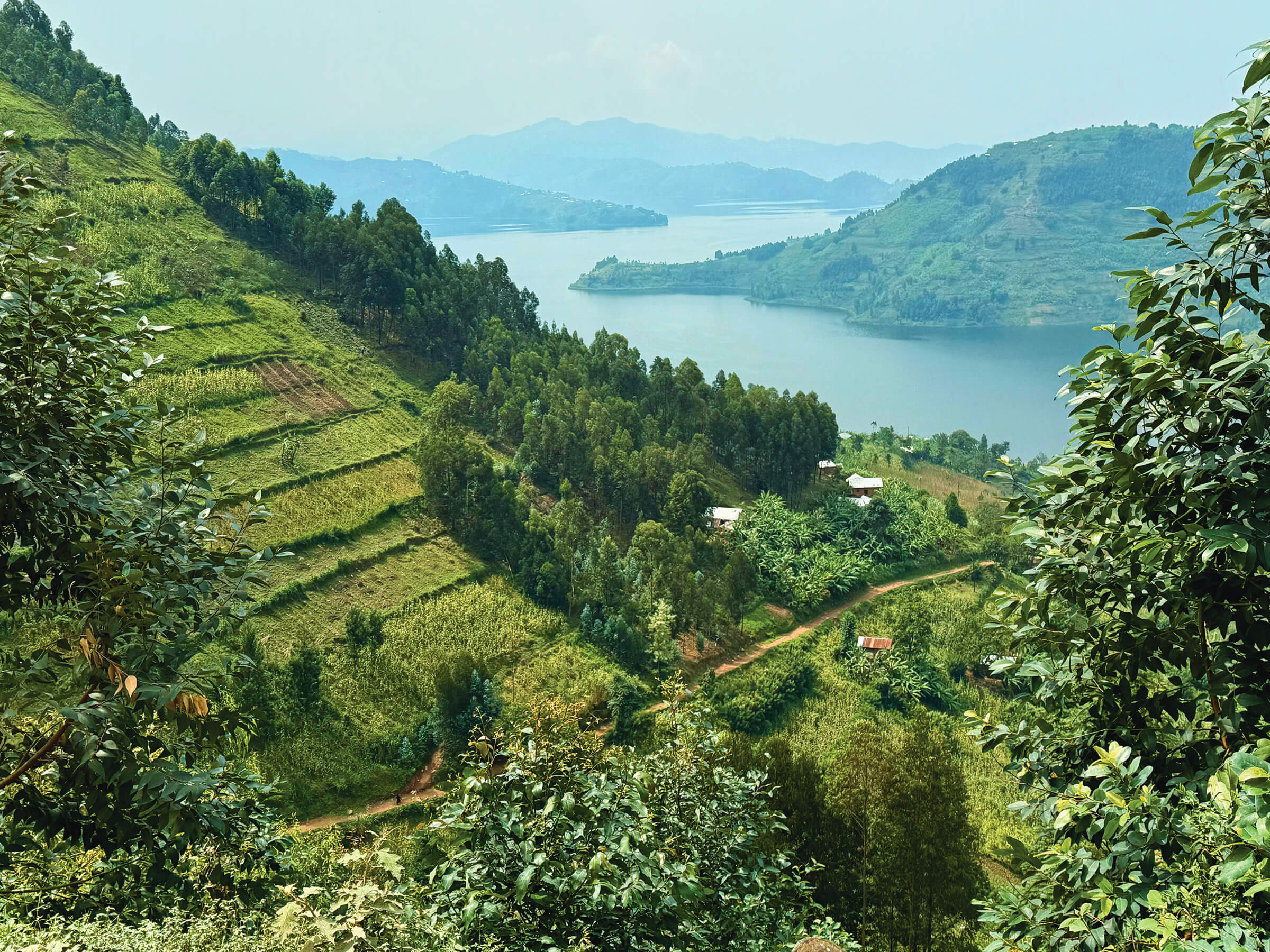 Photo: Doug Higley for Race Around Rwanda / @hugdigley @theracearoundrwanda
Photo: Doug Higley for Race Around Rwanda / @hugdigley @theracearoundrwanda
In the dark lined up next to us are two top East African ultra endurance cyclists. One of them, Vincent, is last year’s winner. On his left is Kenneth, who led last year until sleep deprivation forced him to stop long enough for Vincent to pass him. We know both having raced with them in the Kenyan Migration Gravel Race and joke about which one might win this year. Behind them a few ex Pro Tour riders (Ted King, Laurens ten Dam) make last-minute equipment checks. Our Plan A: stay with the leaders over the first city climb and benefit from drafting along five miles of smooth pavement until hitting the first dirt section.
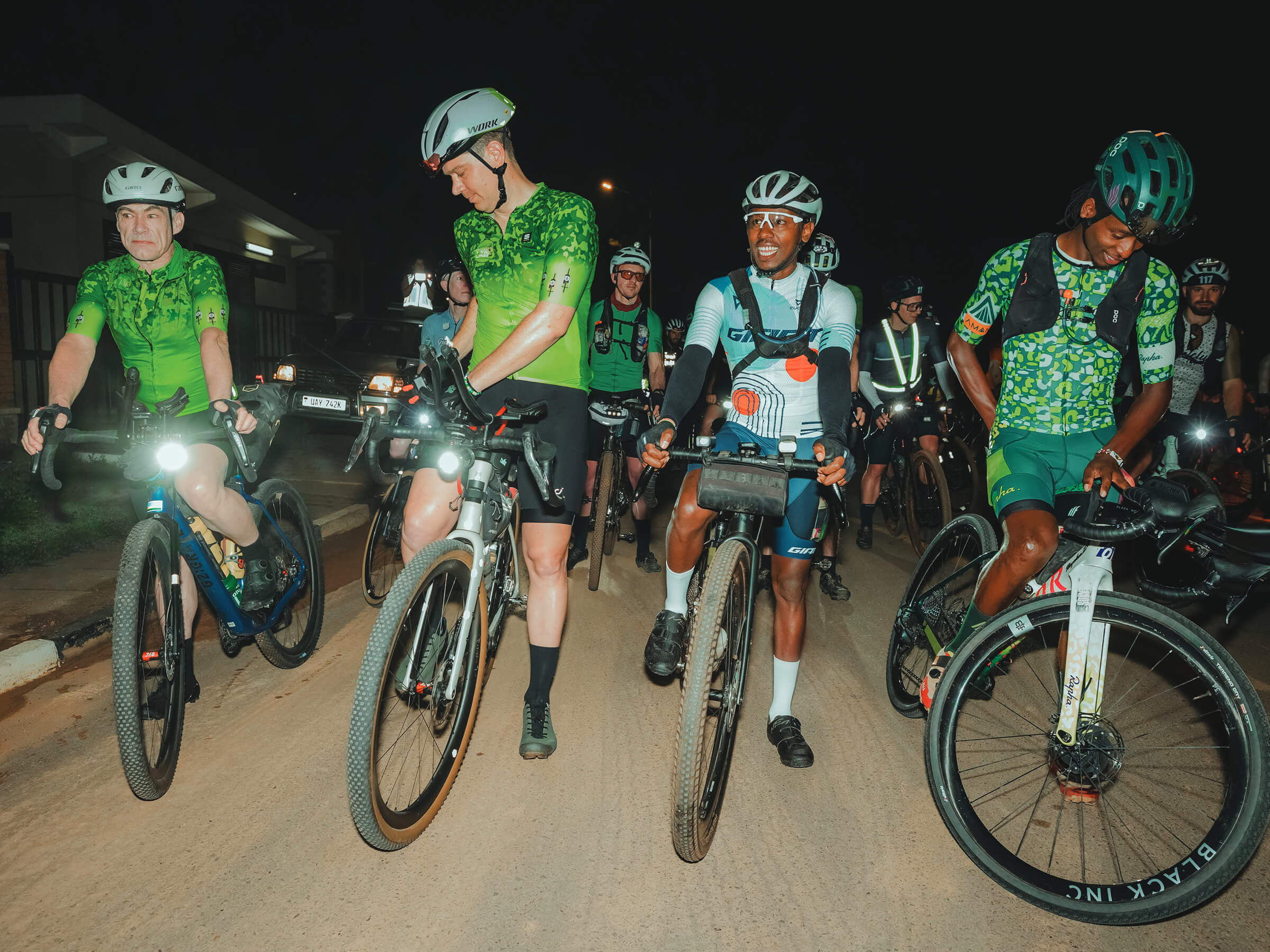 The start at Kigali. Photo: Yuhi The Great for Race Around Rwanda / @yuhi_the_great @theracearoundrwanda
The start at Kigali. Photo: Yuhi The Great for Race Around Rwanda / @yuhi_the_great @theracearoundrwanda
The pack makes a sharp right hand turn on a cobblestone climb. We’re able to keep pace without digging deep. We glide from the top downhill to the dirtand it starts uphill. We back off the pace and watch the former pros and top East Africans drift away. We’ll see them again at check point 2 in 22 hours. They will have showered, eaten, cleaned their bikes, and rested by the time we arrive.
With a tailwind pushing us we watch the kilometers fly by. Rwanda is the Land of a Thousand Hills, but as one racer commented, it should be called the Land of a Million Hills. However, this eastern part of Rwanda is flat. There are rice fields and other crops being tended. Everywhere in this densely populated country we encounter people walking along the road. Personal cars are virtually non-existent outside of the larger cities.
Being on bikes allows us to mingle with locals pursuing everyday tasks; fetching water, picking up laundry, bringing home groceries, milking cows, tending crops, herding goats, transporting cargo by bike, even a wedding procession. You feel the pulse of life and intertwine with the flow of humanity. It’s energizing and a stark contrast with tourists packed into safari Land Rovers staring at their phones, windows rolled up. We watch them drive past and pity their disconnected (and expensive) experience.
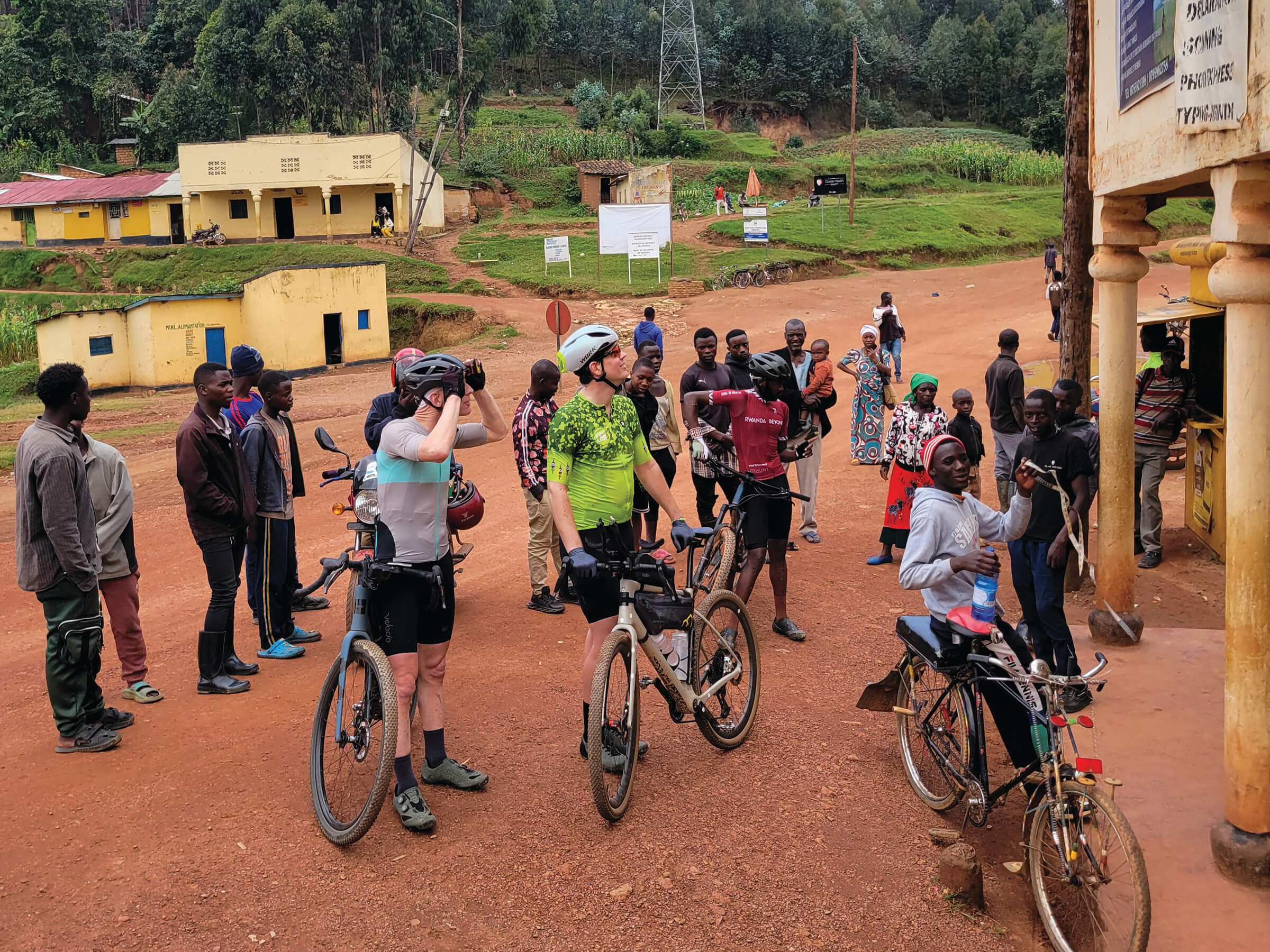 Being on bikes allows us to mingle with locals. Craig Schommer / @zippy_sch
Being on bikes allows us to mingle with locals. Craig Schommer / @zippy_sch
Any stop to refill in a village, no matter how small and distant, brings an instant crowd of curious and helpful bystanders. Outside the larger towns fewer Rwandans speak English. Those over sixty I greet in French (a colonial legacy). When leaving a resupply stop we loudly announce “Tegunde!” (let’s go) in Kinyarwandan and the crowd laughs with surprise and joy hearing foreigners speak their language.
On descents Skyler and I are unintentionally playing a game of cat and mouse. We catch and fly past the better climbers. Later on, I’ll discover that Skyler and I set Strava KOM downhill records during the race. Ted King may have beat us by four hours to checkpoint 2, but I gained 30 seconds on that downhill! Our mountain goat compatriots roll back up to us on the next climb. Alex is from Italy and we match pace for a few flat miles and chat. His first ultra was the Atlas Mountain race. He signed up as a distraction from a relationship that ended. It was brutal, he said, and this RaR seemed like a more enjoyable challenge. This time he’s not looking for an escape from heartache. For a twenty-minute period the clouds disappear, and we feel the full force of the African sun. I know from experience it will turn your lower lip into fried bacon. My Wahoo displays 100 degrees.
At around 100 miles we reach check point 1. Surprisingly, we are one of the top teams and somewhere in the top 10 overall. We sit and scarf down the buffet provided by the race. I’m excited about our placing, but unsure how the rest of the day will unfold. It will be my longest ride in distance, elevation, and moving time. I know Skyler will be fine, he’s finished two ultras. One of them being last year’s RaR.
Eleven hours in we reach the first major climb of almost 3,000 ft elevation gain. At the top rain is threatening and the sun is setting. We are at 7,400 ft and stop at a town to buy pineapple Fanta (the ubiquitous soda in Rwanda), water, bananas, snacks, and pray the rain holds off. Ahead is a four mile long, rocky, rutted, dirt descent. Skyler knows it from racing this last year and suggests we reach it before dark. We’re racing the daylight. By the time we reached the bottom it was dark and rain had started. We take a short stop to rest our hands — they took a beating on the descent — and slip on raincoats. The temperature is dipping below 60. A contrast with the afternoon, now I’m shivering. Eight more hours to Musanze and check point 2.
 This will be my longest ride in distance, elevation, and moving time. Photo: Doug Higley for Race Around Rwanda / @hugdigley @theracearoundrwanda
This will be my longest ride in distance, elevation, and moving time. Photo: Doug Higley for Race Around Rwanda / @hugdigley @theracearoundrwanda
At mile 200 and 17 hours since starting we are looking forward to a smooth, wide, fast dirt road recently improved as part of China’s Belt and Road Initiative. Unlike the previous week when we pre-rode this section, the rain has created wheel-stopping, chain-sucking, peanut butter mud. We dismount to walk on the far edge foot paths. They end and force us back into the mud. We hunt for sticks to dig the mud out of the space between our frames, tires, and derailleurs. It takes thirty minutes to travel two miles.
Finally, at 2am we arrive in Musanze. Later than expected, relieved to shower and get off the saddle. Totals for this first day: 18.5 hours ride time, 230 miles and 16.4k ft of elevation.
Somewhere between checking into our room and eating late dinner (or early breakfast?) there is a commotion at the motel. Laurens ten Dam couldn’t fall asleep and decided to head out at 3:45am. Ted King heard this and quickly changed plans, packed up and rode off to keep the gap between them from getting too large.
Back in our room I dump the contents of my bag onto the bed. Packing for an ultra-endurance event is a learned skill of which I have none. I dreaded another long day of climbing while hauling a heavy, swaying seat bag. Extra food, spare shoes, and protein powder are jettisoned. Later I discovered that Ted King carried no extra clothes. I then realize I am an ultra-noob.
The route from Musanze to Kibuye (check point 3) was rerouted to avoid the military conflict across the border in Goma, DRC. For us that meant a few thousand more feet of climbing. Gishwati Heights*, which we called Little Switzerland, was the primary mountain. It confronted us with gradients of 16%, rain, thunder, and topped out at 9,367 feet. Cresting the top led to one of the most scenic roads we’ve ever experienced. We rolled for miles high above Rwanda along a skyline ridge with views on both sides of forest, terraced tea fields, banana trees, and quaint villages.
 The extremes of Rwanda are difficult to comprehend. Photo: Manu Cattrysse for Race Around Rwanda / @manucattrysse @theracearoundrwanda
The extremes of Rwanda are difficult to comprehend. Photo: Manu Cattrysse for Race Around Rwanda / @manucattrysse @theracearoundrwanda
The extremes of Rwanda are difficult to comprehend. That rugged, steep climb was followed by a wonderful, smooth, flowing descent that made me smile and forget what came before and what was to come.
At the bottom we refueled in cozy Rugendabari. Water topped off, the world’s tastiest bananas stuffed in pockets and frame bags, we climbed slowly out of town. It’s evening and traffic is sparse. Rwanda is shutting down for the day. Two young men riding “taxi bikes” are off duty and can’t resist the urge to keep pace. Miles later they are still with us. Cranking out low cadence, high wattage on the hills. Tucking on the downhills. Their single speed bikes can’t keep pace with our 46×11 gearing. We share the universal thumbs up gesture. Bikes in motion bond four strangers from opposite sides of the globe. Our small peloton glides through a lush countryside, lit from the side by the orange glow of an African sunset.
We share a few words in Kinyarwandan.
“Amakuru?” (how are you?)
“Ni meza!” (I’m good!)
Riding with them reminds me how Rwandan bikes are customized for utility. Rebar strengthens frames that carry any type of cargo you can imagine: two or more passengers, irrigation pipes, furniture, coffins, bananas, water, car tires. Reflectors, colorful leather flaps, and stretched out springs are added for personal flair and style. The most skilled cargo riders become potato cyclists. Earning around $1 per trip, these abadahambana (the ones who don’t stop) descend the volcanic slopes above Musanze overloaded with cargo weighing more than 200lbs. Unable to rely on their brakes to slow down they adapt by dragging a foot along the pavement. Auto tire tread is glued onto their footwear, which is often a simple sandal. The friction can build up and ignite the tread, leaving the rider in a precarious scenario.
Racing through Rwanda also evokes memories of road usage in other countries. In America roads are designed for and dominated by cars. This isn’t universal. Roads serve multiple roles around the world. While riding through South Korean farmland I dodged 20 meter sections of red chili peppers and rice drying on hot asphalt. In Rwanda an ancient chrysanthemum is grown and processed into a natural pesticide. And like in the countryside of Seoul, here too crops are laid on the road to dry.
These spaces remind us the world is connected not only by roads but by agriculture. Chilis from Central America are grown in South Korea to create a national dish (Kimchee). A simple flower, originally from the Balkans, is productive in the moist, high altitude of a Rwandan volcano. After processing it continues its journey to America.
On the second evening after an 11 mile climb, 36 hours since the start and 29 hours in the saddle, we came upon an open shop at the edge of a parking lot filled with moto taxis. Every other village has been shut down for the past few hours, so we can’t take a chance and pass up this opportunity. Slowly crouching down to sit on the tall curb, I move like my joints are those of an arthritic 90-year-old man. Skyler buys two large bottles of amazi (water). After topping off I stand and my legs tell me they are going on strike. Don’t worry, I tell them, there’s only one more 12 mile climb ahead of us. The good news is it’s asphalt, lined with bright streetlights.
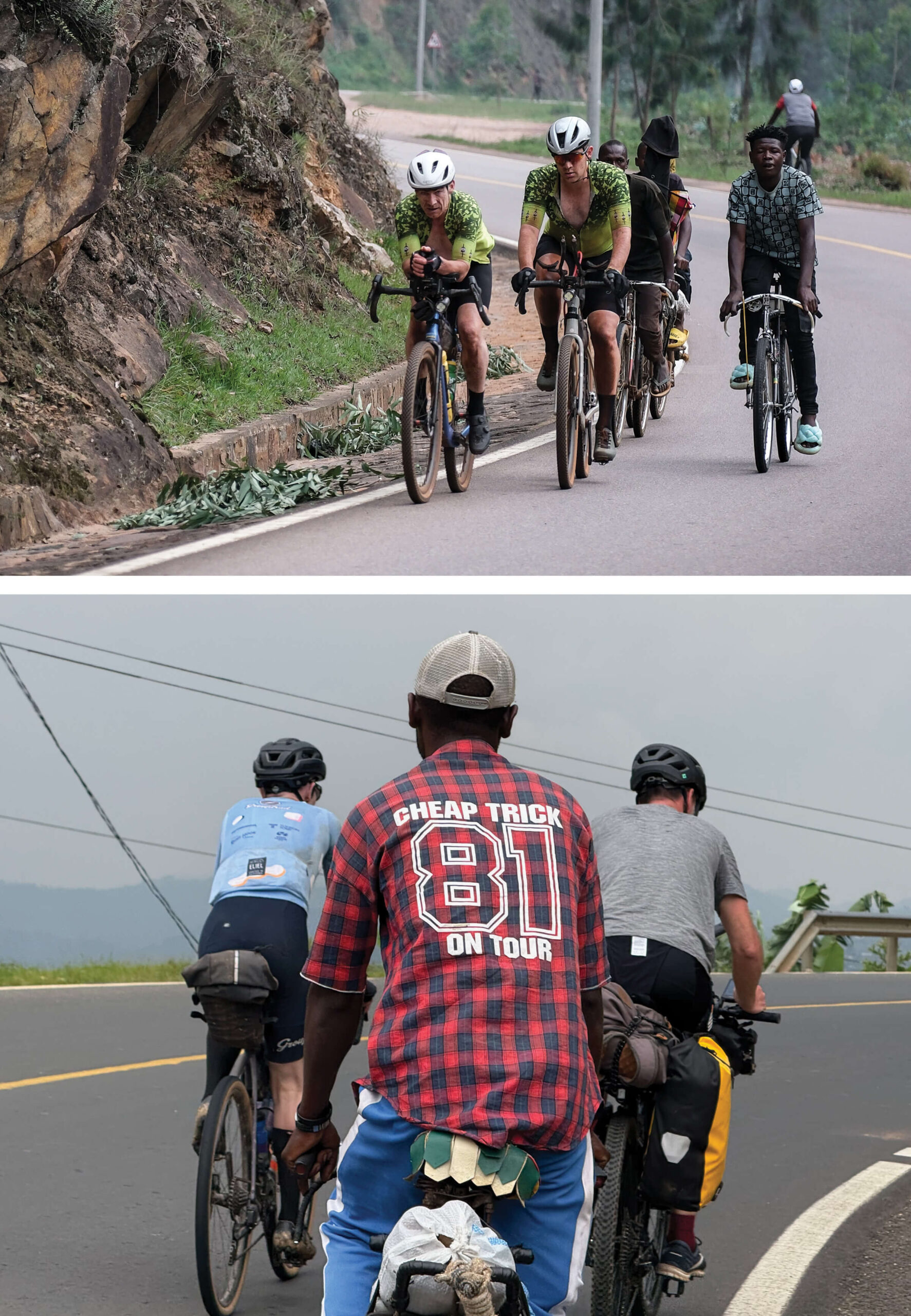 Pavement is a respite not just for the body, but for the mind. Photos: (top) Manu Cattrysse and (bottom) Doug Higley for Race Around Rwanda / @manucattrysse @hugdigley @theracearoundrwanda
Pavement is a respite not just for the body, but for the mind. Photos: (top) Manu Cattrysse and (bottom) Doug Higley for Race Around Rwanda / @manucattrysse @hugdigley @theracearoundrwanda
Pavement is a respite not just for the body, but for the mind. Pedaling is the only thing you must apply your dwindling attention span to. I can stare at Skyler’s rear tire and shut out the world. I don’t want to know what time it is or the number of miles ahead, the elevation to be gained. I haven’t looked at my Wahoo for hours. Skyler turns on music for the first time to help keep us awake.
Rain hits us hard on the sweeping, fast descent. Streetlights flicker as if possessed. This strangeness is welcome entertainment for a worn-down mind. All my layers are on and I’m shaking from the combination of water, sleep deprivation, and physical exhaustion. I focus on keeping the bike going straight. It’s mostly downhill from here to the checkpoint and I’m not sure which is preferable, more climbing or wet road spray and shivering. We’re hitting 40 mph and still the passenger minibuses blast past us around blind corners. I expect to see them tilt onto two wheels or slide out through the corner. Maybe they hire demons to drive these at night?
Few cars travel after sundown. We encounter only minibuses and cargo trucks. One truck rolls by with “Jesus is Great” custom painted in Kinyarwandan on the rear flap. Each hosts a guard camped on top, protecting the cargo. We wonder aloud what would happen if the truck came to a quick stop. Was he restrained up there? Twenty minutes later that same truck was slumped halfway into a ditch. In an instant our hearts sink — the guard is nowhere in sight.
Kibuye comes into view after 14.5 hours and 14k ft of climbing. Lifting my bike up the stairs to the hotel room is laborious. After showering I notice my urine is pink, the same color as my hibiscus energy drink. My fatigued brain thinks it simply passed through. Sklyer reminds me that isn’t how the kidneys work. I force myself to eat a little, but it feels nauseating. My skin is tight, sensitive, prickly, and hot. I wonder if this is what it feels like being poisoned.
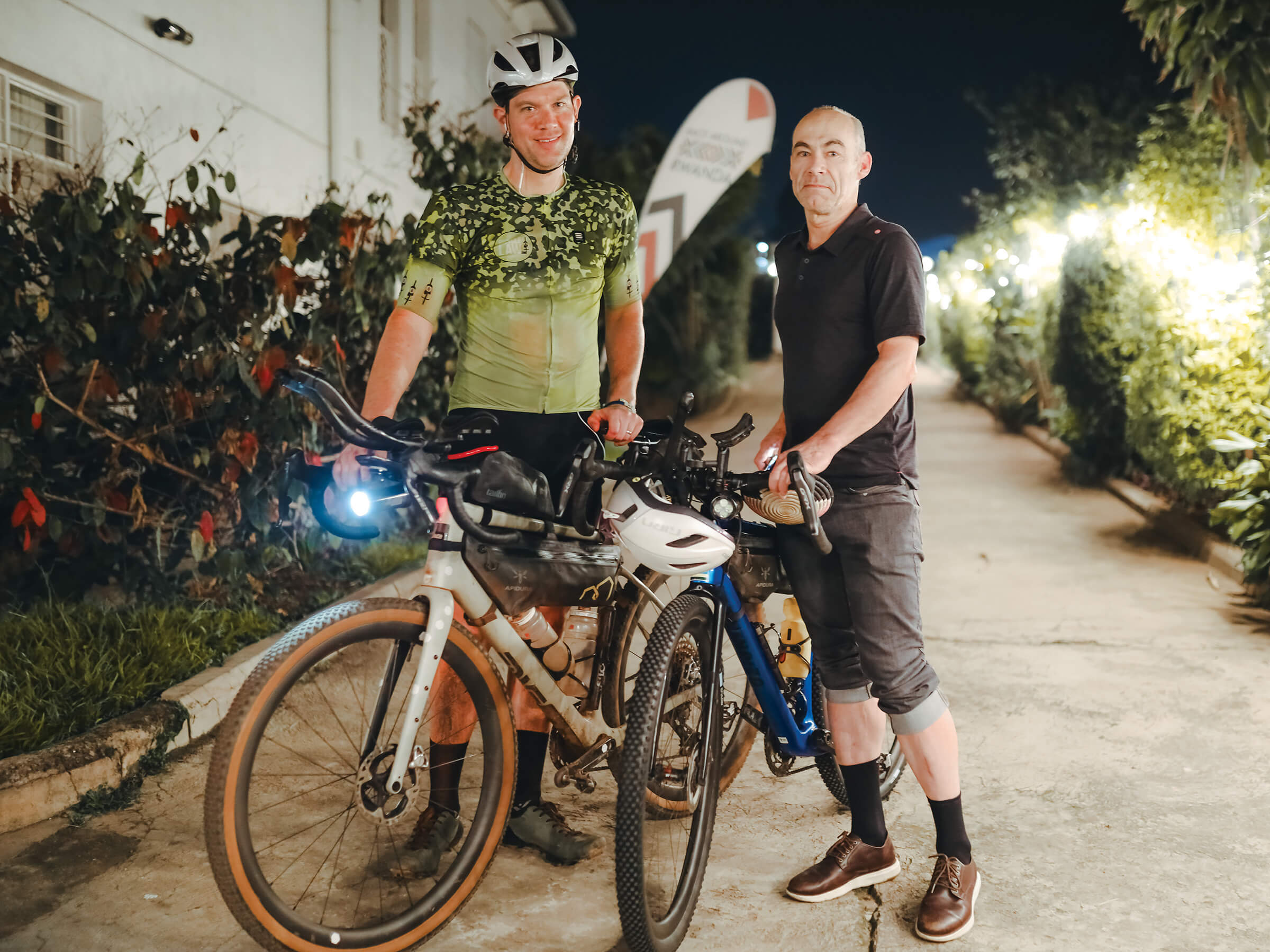 Done and dusted. Skyler and Craig after the race. Photo: Yuhi The Great for Race Around Rwanda / @yuhi_the_great @theracearoundrwanda
Done and dusted. Skyler and Craig after the race. Photo: Yuhi The Great for Race Around Rwanda / @yuhi_the_great @theracearoundrwanda
Morning comes and my instinct for self-preservation kicks in. I’m concerned that this fatigue might hit me again, this time late at night deep in the Nyungwe rain forest hours from any shelter or resupply. Our friend Faziri arranges a ride back to Kigali for me. Skyler continues on, reaching the top of the forest around midnight. He finds a shut hotel and wakes the manager, a Frenchman who proceeds to cook him a basic spaghetti dinner since the chef is home sleeping. A friendly German Shepherd lays nearby while Skyler eats this fortuitous meal.
The following day I check on Skyler’s dot watcher. He’s making good progress and will finish that evening around midnight. I order two dinners for him and stash them in the refrigerator. At the finish line he’s beyond exhausted and relieved. Even talking is an effort. He has dug deep, finishing a full day faster than last year and in 20th place (unofficially since we were registered as a team). With his finishing prize in hand (a small hand-woven bowl) we roll back to our Kigali apartment. Shockingly, I have recovered quickly, my legs feel better than when we started. However, now isn’tthe time to suggest we try again next year.
Craig Schommer is a former Olympian who, along with Bicycle Law founder Bob Mionske, competed at the 1988 Olympics in the road race.
*Gishwati Heights is dense with evergreen trees and lies within a National Park. During the 1994 genocide the area was a sanctuary for refugees who survived by subsistence farming. Thankfully, there are efforts to restore the area and prevent further bio-diversity loss.
Have you or someone you know been involved in a bicycle crash? Want to know about your rights? Are you a lawyer handling a bicycle crash who wants the best result for your client? Contact Bicycle Law at (866) 835-6529 or info@bicyclelaw.com.
Bicycle Law’s lawyers practice law through Coopers LLP, which has lawyers licensed in California, Oregon, and Washington state, and can affiliate with local counsel on bicycle cases across the country to make sure cyclists benefit from cycling-focused lawyers.
